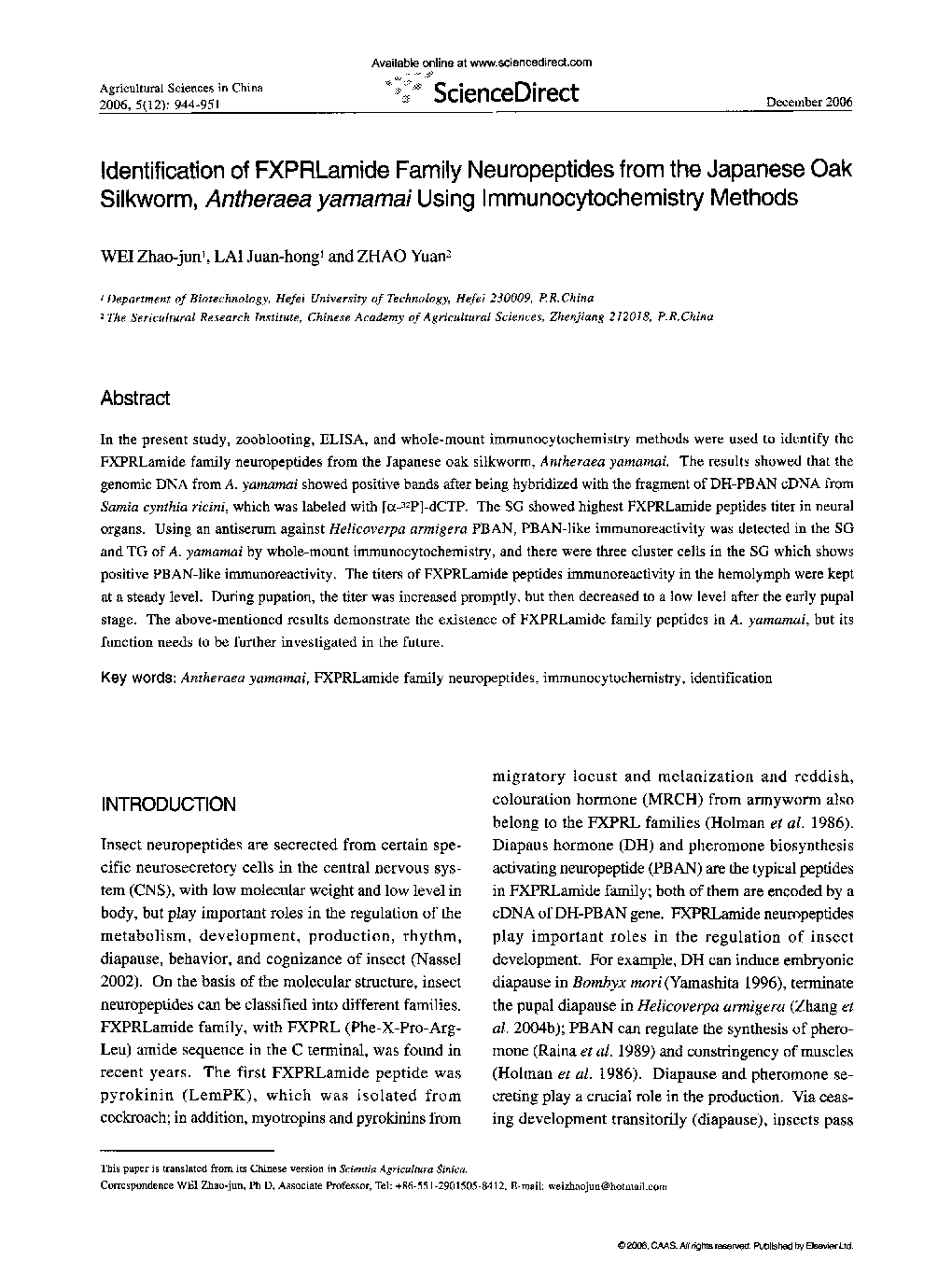| Article ID | Journal | Published Year | Pages | File Type |
|---|---|---|---|---|
| 4490831 | Agricultural Sciences in China | 2006 | 8 Pages |
In the present study, zooblooting, ELISA, and whole-mount immunocytochemistry methods were used to identify the FXPRLamide family neuropeptides from the Japanese oak silkworm, Antheraea yamamai. The results showed that the genomic DNA from A. yamamai showed positive bands after being hybridized with the fragment of DH-PBAN cDNA from Samia cynthia ricini, which was labeled with [α-32P]-dCTP. The SG showed highest FXPRLamide peptides titer in neural organs. Using an antiserum against Helicoverpa armigera PBAN, PBAN-like immunoreactivity was detected in the SG and TG of A. yamamai by whole-mount immunocytochemistry, and there were three cluster cells in the SG which shows positive PBAN-like immunoreactivity. The titers of FXPRLamide peptides immunoreactivity in the hemolymph were kept at a steady level. During pupation, the titer was increased promptly, but then decreased to a low level after the early pupal stage. The above-mentioned results demonstrate the existence of FXPRLamide family peptides in A. yamamai, but its function needs to be further investigated in the future.
